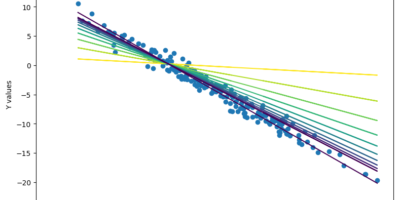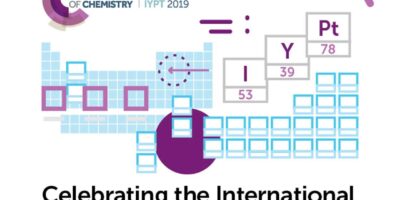A patent is the right for its holder to exclude others from manufacturing, using, or selling an invention for a certain period of time, usually twenty years. The word “patent” brings to mind inventions like lightbulbs, motors, circuits: human-made devices and processes that do not exist in nature. The patent system was designed to reward innovation by granting a monopoly for its rights-holder.
In 1994, Myriad Genetics patented a method of diagnosing propensity of breast cancer by looking at the mutated DNA sequences BRCA1 and BRCA2 in the United States. BRCA1 and BRCA2 are responsible for producing proteins that repair DNA damage resulting from errors in cell division in the breasts. Although gene defects only cause 5 to 10% of breast cancer, carriers of the defective BRCA1 and BRCA2 genes have an 87% chance of developing breast cancer within their lifetimes.
That was not the first time the US had allowed for biological materials organisms to be patented. Substances like isolated adrenaline, purified insulin, and genetically-modified oil-eating bacteria have been all patented at one point.
It should be noted that Myriad’s patent only applies to US distribution, and that Canadian women in high risk (i.e., belonging to specific ethnic groups, or having a history of cancer) can have the test performed for no cost at a hospital.
Gene sequences and analytical methods have also been patented, including diagnosis of QT syndrome, which can lead to heart arrhythmia, and the HFE gene itself, linked to iron accumulation in the blood. Myriad Genetics’ patent on BRCA1 and BRCA2 is not unusual. However it evokes a visceral reaction from patients and medical professionals.
Myriad Genetics charges $3000 per genetic screening. The patent also makes it impossible to get a second opinion because Myriad Genetics does not license the genes. Furthermore, the patent, though rewarding the innovation of Myriad Genetics, makes it difficult for other companies to do research because of the licensing hoops that must be cleared before scientific progress can be made.
From a more visceral standpoint, patenting part of the human body feels strange. Some would compare patenting a gene to patenting a novel method of severing a human limb. Others would compare it to patenting purified insulin, which is a discovery of great value. We could argue that the only difference is that, as humans, we feel less attachment to a vial of insulin than to a limb or a gene.
On the other hand, insulin was discovered in 1923. I don’t know how difficult or innovative it was for Myriad researchers to isolate BRCA1 and BRCA2 from the human genome, but it is known that researchers around the globe had been searching for a genetic cause of breast cancer since 1988. I am inclined to believe that it was more difficult to find a way to purify insulin in 1923 than to isolate genes and identify mutations in 1994. After all, the human genome project has already mapped nearly the entirety of human DNA, and many gene sequences have already been patented. For that reason, I believe that Myriad Genetics does not have a valid patent in its isolation of the BRAC1 and BRAC2 genes and associated diagnostic techniques to identify mutations thereof.
However, I can’t help but think that there would have been a more ethical way to incorporate the patent into Myriad’s business model. Their current practice is to offer exclusive diagnosis services for mutations in BRCA1 and BRCA2 genes, at a premium price. Myriad could have instead licensed their techniques to other companies, so to allow consumers the freedom of choice and the ability to get second opinions on the results of their genetic screenings.
Even now, the gene patenting system is not ideal. While Myriad’s patents expire in 2014, there remain countless other gene patents that potentially infringe upon future scientific discovery. Already, 2000 isolated human genes have been patented in the United States. It would be extremely difficult and expensive for a research group to acquire the rights to legally investigate all the genes that might impact upon a genetic research project. The standard 20 years of protection provided by the patent system harken back to an earlier age when protectionism was unlikely to slow progress significantly, because scientific progress was slow. Nowadays scientists are more likely to make discoveries nearly concurrently with their competitors, yet may be blocked from further investigations after their competitors have patented the innovation.
But that’s not what the current lawsuits are about. The current lawsuits focus mainly on the validity of patenting the BRCA1 and BRCA2 genes and associated diagnostic methods. For over three years, Myriad Genetics has been embroiled in a lawsuit against the Association for Molecular Pathology, the University of Pennsylvania, researchers at Columbia, New York University, Emory, and Yale, patient advocacy groups, and individual patients. The researchers and patients claim that genes are not patentable subject matter, being products of nature, and that diagnostic methods are merely thought processes yielding no real-world transformations. They also argue that the current gene patent system is unreasonably unfair to patients and researchers. Myriad counters that their patents are for “isolated sequences” which do not exist isolated in nature.
In March 2010, the District Court for the Southern District of New York ruled against Myriad. Myriad appealed, and in July 2012, the United States Court of Appeals for the Federal Circuit overturned the lower court’s decision. The researchers, represented by the American Civil Liberties Union, appealed, and oral arguments were heard before the US Supreme Court on April 15th, 2013.
Whichever way the cookie crumbles in this case, it will be a landmark ruling on the acceptability of gene patents in the US.




Leave a Reply